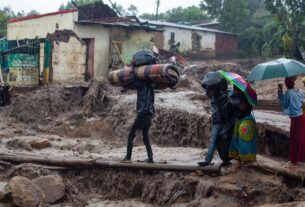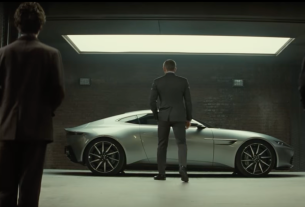With Ireland potentially able to clinch the Six Nations title and Scotland targeting the triple crown, there is enough riding on next weekend’s fixture at Murrayfield without the need to add to the narrative. Still, the subsequent meeting between the two sides on the horizon – in Pool B of the 2023 World Cup in October – is unmissable.
Given Scotland’s upward trajectory, Ireland’s unerring consistency and South Africa’s enduring pedigree, not to mention Tonga’s ability to ruffle feathers, that particular pool is increasingly looking shark-infested. As this Six Nations has worn on, there have been numerous suggestions that it is a problem, a terrible look to have such a competitive pool, with three of the world’s top-five ranked teams. The only sane response is: why?
Why is it a bad thing to have a pool so tightly contested? To have a pool in which predicting the two qualifiers is not straightforward?
To lament the draw is to hark back to the days when all quarter-final qualifiers were predictable, when you could put the house on who would make the last eight. There was a similar argument in 2015 but that tournament will be remembered for the incredible drama of a pool from which Australia and Wales advanced and England did not.
A place in the quarter-finals is not the birthright of the more established countries – the old Five and Tri Nations sides. It is not the preserve of the institution, those with more seats on executive committees. God knows it is hard enough for the so-called tier-two nations to upset the old order, even if World Rugby has mercifully moved to address the glaring disparity over in-tournament rest periods between established and developing countries.
Without the kind of jeopardy in Pool B, there is the danger we are left going through the motions until the knockout stages. Granted, France against New Zealand will be a spectacle not to be missed – just as the All Blacks’ early encounter with South Africa was in 2019 – but in this elongated tournament there are more than five weeks between that opening night and the first quarter-final.
As thrilling as the late stages of last year’s Rugby League World Cup were, France 2023 really does not want a repeat of the tedium that preceded it in the pool stages.
The stick with which World Rugby is often beaten is that the draw took place just over a year after the last tournament, with seedings based on the world rankings at the start of 2020 – in other words, straight after Japan 2019.

It must be remembered, however, that World Rugby’s hands were tied by the pandemic, with the 2020 fixture list obliterated and some teams not playing at all that year. Rankings at the end of that year were initially supposed to apply. As World Rugby also points out, there is no perfect time to make the draw – doing so early allows for things such as ticketing and marketing campaigns – and the flux among the world’s top 10 of late is unprecedented. Again, that is no bad thing, either.
You could argue that a draw so early in a World Cup cycle allows teams to focus less on results in the middle of it, but that Eddie Jones is no longer England head coach perfectly illustrates the pitfalls of such an approach.
It should also be remembered that South Africa were ranked seventh when the draw for the 2019 World Cup was made, in the second band of seeds, and it did them no harm.
after newsletter promotion
Admittedly, the situation is aggravated by the fact that New Zealand, France and an eye-catching young Italy side are in the pool on the same side of the draw. This gives the tournament a lopsided look but that only adds intrigue to the other half, where it is not inconceivable that Japan and Fiji end up meeting each other for a place in the semi-finals.
It is in that half, where the established sides look less strong – with Steve Borthwick, Warren Gatland and Jones all racing the clock with England, Wales and Australia, respectively – that the potential for upsets is ripe.
And just as was the case in football’s World Cup, with Morocco reaching the semi-finals, all good tournaments need a sustained run from an unlikely source. Go back four years and, apart from that high-octane clash between New Zealand and South Africa, it was Japan and their swashbuckling run to the knockout stages that illuminated the first half of the tournament.
Take that away and we would have been left with referees chastising themselves for not clamping down hard enough on high tackles in the opening weeks of the tournament and the impact of the devastating typhoon.
Looking to this year’s tournament, history does at least bode well, because at France 2007, Fiji reached the knockout stages and Argentina the semi-finals for the first time. In the professional era, Japan, four years ago, are the only other side to reach the knockout stages beyond the more established eight nations.
That paltry record is a blight on the tournament and if having one pool of death provides a better opportunity for more unlikely quarter-finalists then surely that is something to be celebrated.


